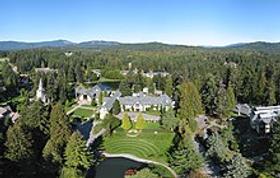From the 1600s to the 1800s there was no such thing as public education. The 12 years of grade school through high school we are accustomed to in the 20th-century did not exist. Small private schools, not public schools, provided schooling for young people.
The Bible was the focus of learning in colonial times. Most lessons were practical ones learned in the home and in the fields. Robert Peterson's article Education in Colonial America explains how education worked back then.
Colonial education
Education in colonial days was quite stratified. Boys learned core subjects such as reading and math. Girls learned the domestic arts. Only white children received an education until slavery was abolished. Teachers were frequently well-intentioned men who themselves did not have much formal education. Yes, back then, most teachers were men. Colonial Era Education in the United States in K12 Academics offers a detailed look at schools in the late 17th and early 18th-centuries. Once again, it is important to note that there were no public schools or compulsory education in colonial America. Schools sprouted up where there was a need for them in the population centers of the day such as Boston and Philadelphia. Otherwise, education took place in the home.
This video offers an overview of education in colonial America.
Religious schools
Religious missionaries of the Roman Catholic Church established the first private schools in Florida and Louisiana. By all accounts, education in the northeastern colonies was better organized in the 18th century than in the south. The other feature of colonial education is that most learning and teaching followed English models. Gradually other national influences, Dutch, English, Irish, Scottish, and German, added their own educational models and traditions to the mix.
Urban schools
Schools such as Boston Latin School were founded in order to teach the Classical Languages of Latin and Greek. In Manhattan Collegiate School "was established by the Dutch West India Company and the Classis of Amsterdam, the parent ecclesiastical body of the Dutch Reformed Church for the colonists of New Amsterdam." In Washington, DC, Georgetown Preparatory School was "founded in 1789 by America's first Catholic bishop,
Prep is the nation's oldest Jesuit school and the only Jesuit boarding school." In the early part of the 18th-century English grammar schools taught more subjects as the need for a more educated populace grew. The latter part of the 18th century saw the development of the genre known as the Academy. Visionaries such as William Penn guided the educational thinking of the time.
This video looks at the beginnings of education in colonial America.
The birth of public education
In the 19th-century a uniform, organized system of public education did not take shape until the 1840s. Leading the push for better education in the northeastern colonies were leaders such as Horace Mann and Henry Barnard. They were the architects of the concept of public funding for schools at the local level, a model which still flourishes in the 21st- century.
No different back then than in the 21st-century there were parents who wanted a better education for their children. And there were civic-minded leaders who understood how a rigorous academic education was essential to ensuring the solid growth of the new nation. The Phillips family, for example, founded Exeter and Andover Academies with serious, high-minded purposes. The Deed of Gift which established Exeter states that the Academy should teach its students "not only in the English and Latin grammar, writing, arithmetic, and those sciences wherein they are commonly taught, but more especially to learn them the great end and real business of living." Andover’s 1778 Constitution charges the Academy to prepare “Youth from every quarter” to understand that “goodness without knowledge is weak…yet knowledge without goodness is dangerous.”
This video offers a look at education in 19th-century America.
As we move into the 19th-century philanthropists such as Stephen Girard (1750-1831) play a pivotal role in establishing private schools to educate children from poor families. The altruistic thread permeates the late 18th and 19th centuries as wealthy businessmen understood the social and economic implications of a good education for every quarter of society. Milton Hershey (1857-1945) and Princess Bernice (1831-1884) came from quite different backgrounds but shared a common goal of educating young people at no cost to their families. The schools which they established are some of the grandest examples of educational philanthropy to be found anywhere in the world.
Mathew Lynch's The Surprising Influence of the 18th-century's Educational Influence contains some fascinating glimpses of the state of education in the 1700s. Many educational foundations were laid during those early years. Ted Brackemyre's The Education of the Masses picks up the story as public schools came online in the 19th-century. The patchwork of private and religious schools had served the young nation well, giving it one of the highest literacy rates in the world. As the nation grew, new, more comprehensive, egalitarian approaches to K-12 education gave birth to the public education system with which we are familiar.
Conclusion
Essentially then, private education in the colonies came before public education. As public education took hold, private schools sprang up in order to fill a need not provided for in the public sector. Parents who felt that they wanted more for their children had options even back in the early days of the nation. That concept of options has not changed in the 21st-century. A parent who desires a particular type of education has a wide variety of options available to him. 80% of American children are educated in the public system. The other 20% find what their parents are looking for in a private school.
Questions? Contact us on Facebook @boardingschoolreview












